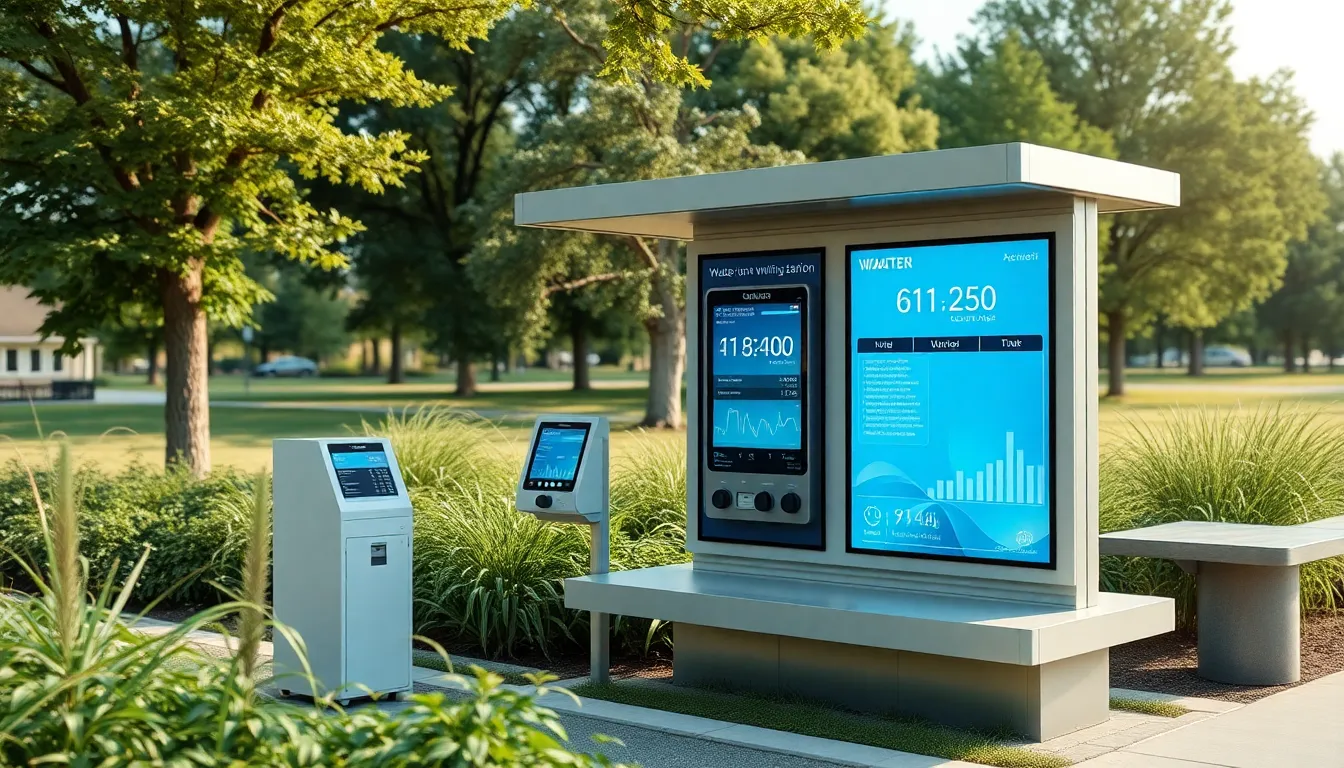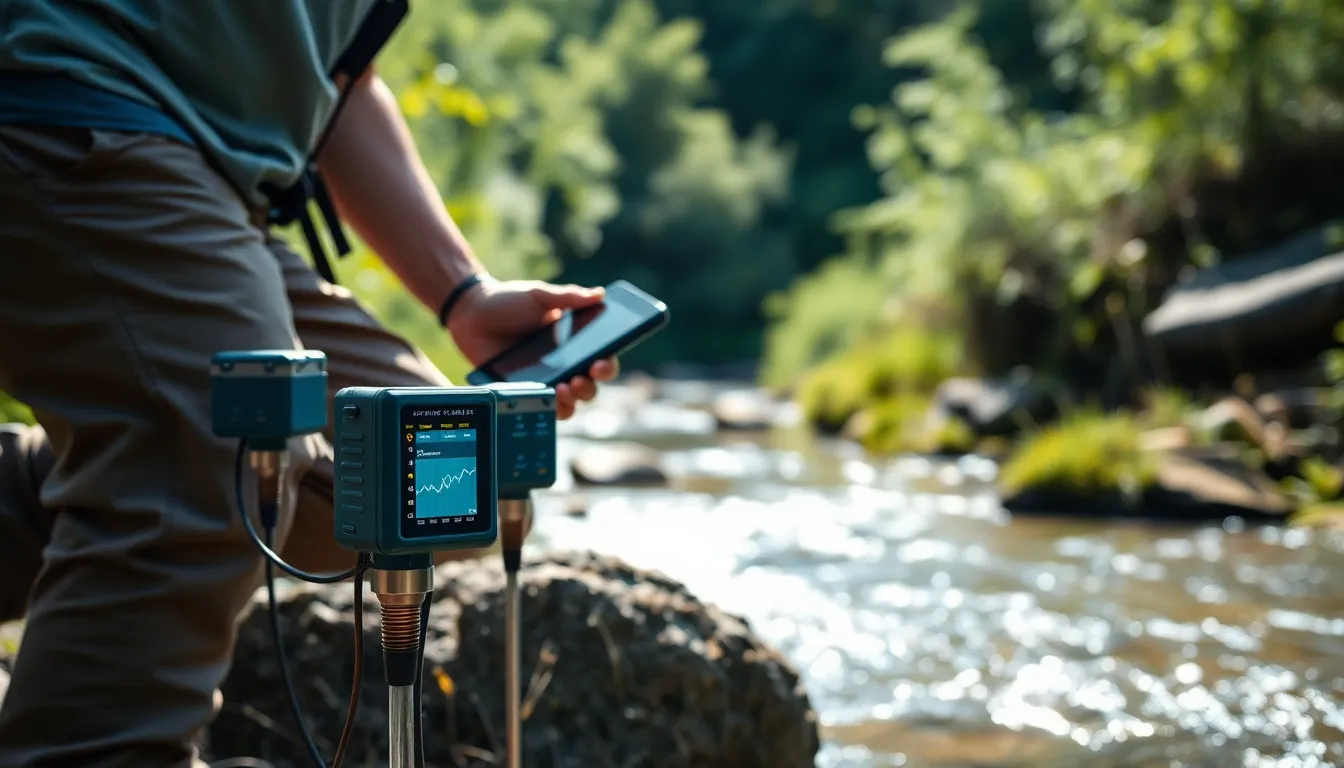Table of Contents
ToggleWater is life, but let’s face it—nobody wants to drink something that smells like a wet dog or looks like a science experiment gone wrong. Enter digital water quality monitoring, the superhero of hydration. With advanced technology at our fingertips, ensuring clean and safe water has never been easier or more efficient.
Overview of Digital Water Quality Monitoring
Digital water quality monitoring ensures the safety and cleanliness of water through advanced technology. This approach addresses the critical need for clean drinking water, emphasizing its importance for public health.
Importance of Water Quality Monitoring
Monitoring water quality plays a vital role in preventing health issues. Contaminated water leads to diseases, affecting millions globally. Continuous assessment identifies harmful pollutants, ensuring compliant drinking water standards. Local authorities rely on precise data to manage water resources effectively. Enhancing public awareness encourages the protection of vital water supplies. Communities benefit from better health outcomes when water quality is regularly monitored.
Key Technologies in Digital Monitoring
Digital monitoring employs various technologies for precise water quality assessment. Sensors measure parameters such as pH, turbidity, and temperature. Remote sensing devices streamline data collection, allowing real-time monitoring. Data analytics software processes information to detect anomalies quickly. Cloud computing facilitates remote access to data, increasing efficiency. IoT devices enable automated alerts for water quality breaches, ensuring rapid response actions. These technologies collectively enhance the effectiveness of water quality management.
Benefits of Digital Water Quality Monitoring

Digital water quality monitoring offers significant advantages for ensuring safe drinking water. By leveraging advanced technology, communities gain access to vital information that enhances water management efforts.
Real-Time Data Collection
Real-time data collection fosters immediate awareness of water quality. Technologies like IoT sensors continuously monitor various parameters such as pH and turbidity. Access to instant data allows for timely responses to contamination issues. Communities benefit from immediate alerts regarding any irregularities. This proactive approach minimizes health risks associated with unsafe water.
Enhanced Accuracy and Reliability
Enhanced accuracy and reliability characterize digital water quality monitoring systems. Automated sensors reduce human error during water testing processes. Measurements capture consistent data points, eliminating discrepancies over time. Compliance with regulatory standards improves as a result of precise data collection. Trust in water quality increases among residents, contributing to community well-being and safety.
Challenges in Digital Water Quality Monitoring
Digital water quality monitoring faces several challenges that hinder its effectiveness and efficiency. Identifying and addressing these challenges is essential for optimizing water quality management.
Data Management Issues
Data management presents significant challenges in digital water quality monitoring. Large volumes of data generated by sensors require proper storage and organization. Effective data analysis methods must be established to transform raw data into actionable insights. Without robust management strategies, decision-makers might encounter difficulties interpreting results. Timeliness of data also plays a key role; delayed data can impede swift responses to contamination issues. Manual data handling increases the risk of errors, undermining trust in the monitoring system. Appropriate software solutions and analytical tools remain vital for streamlining data workflows.
Integration with Existing Systems
Integration with existing systems poses another challenge in digital water quality monitoring. Many facilities use legacy systems that may not easily adapt to new digital solutions. Compatibility issues often arise when attempting to connect various devices and platforms. Effective integration requires careful selection of technologies that can work harmoniously with current infrastructure. Developing seamless interfaces between new tools and traditional systems is essential for improving user experience. Both technical and personnel training remain crucial to ensure that all stakeholders can utilize integrated systems effectively.
Future Trends in Digital Water Quality Monitoring
Digital water quality monitoring is rapidly evolving, driven by advancements in technology and regulatory updates that shape the future landscape of water safety.
Emerging Technologies
Improved sensor technologies continue to redefine digital water quality monitoring. Innovations like miniature sensors enhance the ability to detect contaminants with precision. Accommodating real-time analytics, cloud computing facilitates the immediate analysis of data collected from various sources. These advancements increase the speed of response to water quality issues. Additionally, artificial intelligence plays a significant role, enabling predictive maintenance and proactive management of water systems. Autonomous drones are emerging as an effective means to survey large water bodies. All of these technologies contribute to a more robust and responsive approach to maintaining water quality.
Regulatory Changes
Changes in regulations impact the implementation of digital water quality monitoring significantly. Enhanced standards require more comprehensive data reporting and increased transparency concerning water quality. Regulators are emphasizing the need for real-time monitoring and rapid reporting to ensure public safety. Moreover, updated guidelines are setting stricter limits on permissible contaminants, pushing municipalities to adopt modern monitoring systems. Collaboration between regulatory bodies and technology providers fosters the development of compliant solutions. As a result, organizations must adapt to a dynamic regulatory environment to maintain accountability and protect community health.
Digital water quality monitoring is transforming how communities ensure safe drinking water. By leveraging advanced technologies, it enables real-time data collection and immediate responses to potential contamination. This proactive approach not only enhances public health but also builds trust among residents regarding their water supply.
As challenges in data management and system integration persist, ongoing innovation and collaboration will be vital. Future advancements promise even more efficient monitoring solutions, ensuring that water quality management keeps pace with evolving regulatory demands. The commitment to improving water safety through digital monitoring will ultimately safeguard health and well-being for all.





